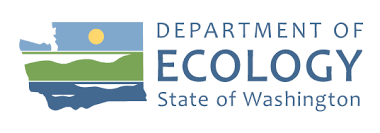Part 3 of 4 Parts (Please read Parts 1 and 2 first)
Chemicals including mercury which can cause damage to the brain, kidneys and heart as well as PCBs, which can cause cancer, have been found in the Columbia River. These dangerous substances could be ingested by eating fish from the river. An advisory warning fishermen was released in 2017. The Hanford Reach is a one-hundred-and-fifty-mile section of the river that runs through Hanford. The advisory suggests limiting consuming some fish from the Columbia four or fewer times a month.
In the past ten years, it has been discovered that hundreds of gallons of highly radioactive waste have been leaking from two Hanford tanks, threatening the Columbia River.
McClure Tosch is a Natural Resource Injury Assessment lead for ER/WM. He recently said that the Yakama Nation has played a key role in the developing a plan for the EPA to monitor the Columbia basin, including fish tissue.
ER/WM has also been advocating for the federal government to test the water wells at Hanford near the Columbia River for perfluoroalkyl and polyfluoroalkyl substances (PFAS) which are long-lasting chemicals that can be found in an array of commercial and industrial products. If the tests do reveal PFAS pollution, that could be a huge concern for the local drinking water. The Washington Department of Energy said, “Information-gathering about the occurrence and use of PFAS at DoE sites is ongoing”.
The Yakama Nation has also focused on preserving culturally significant plants. Recently, Sherwood has been supervising the protection of a bright yellow plant known as Umtanum desert buckwheat. This plant has long been known as a medicinal plant among the local Indigenous people. Today, Hanford is the only place in the world it is documented as growing.
Despite the fact that the federal government is slow to act, the Yakama Nation has scored some important winds.
Recently, the ER/WM succeeded in amending a cleanup proposal for an area next to the Columbia Rivcer that contains nuclear reactors. Their work is ensuring it will include a review of the impact of the pollution on aquatic insects. In the coming months, Tosch says that the Yakama Nation will work with the federal government to assess the effectiveness of a polyphosphate injection to sequester uranium found in Hanford’s ground water. The tribe has questioned the wisdom of this approach.
ER/WM staff have also pushed back against a federal change in how high-level radioactive waste is classified. This could downgrade some of Hanford’s waste which would prevent it from being removed from the site as is currently expected. The DoE said they do not plan to proceed with this new interpretation without first consulting with the local Indigenous Nations.
For their part, both the DoE and EPA said that their representatives meet with Yakama Nation regularly about Hanford. They have benefited from the tribe and other local Indigenous Nations’ expertise and input.
Brian Stickney is the DoE deputy manager for the Hanford site said in a statement that while the Yakama Nation wants to see their lands returned to a pre-nuclear state, the DoE is focused on regulatory requirements and protecting treaty rights.
Please read Part 4 next
